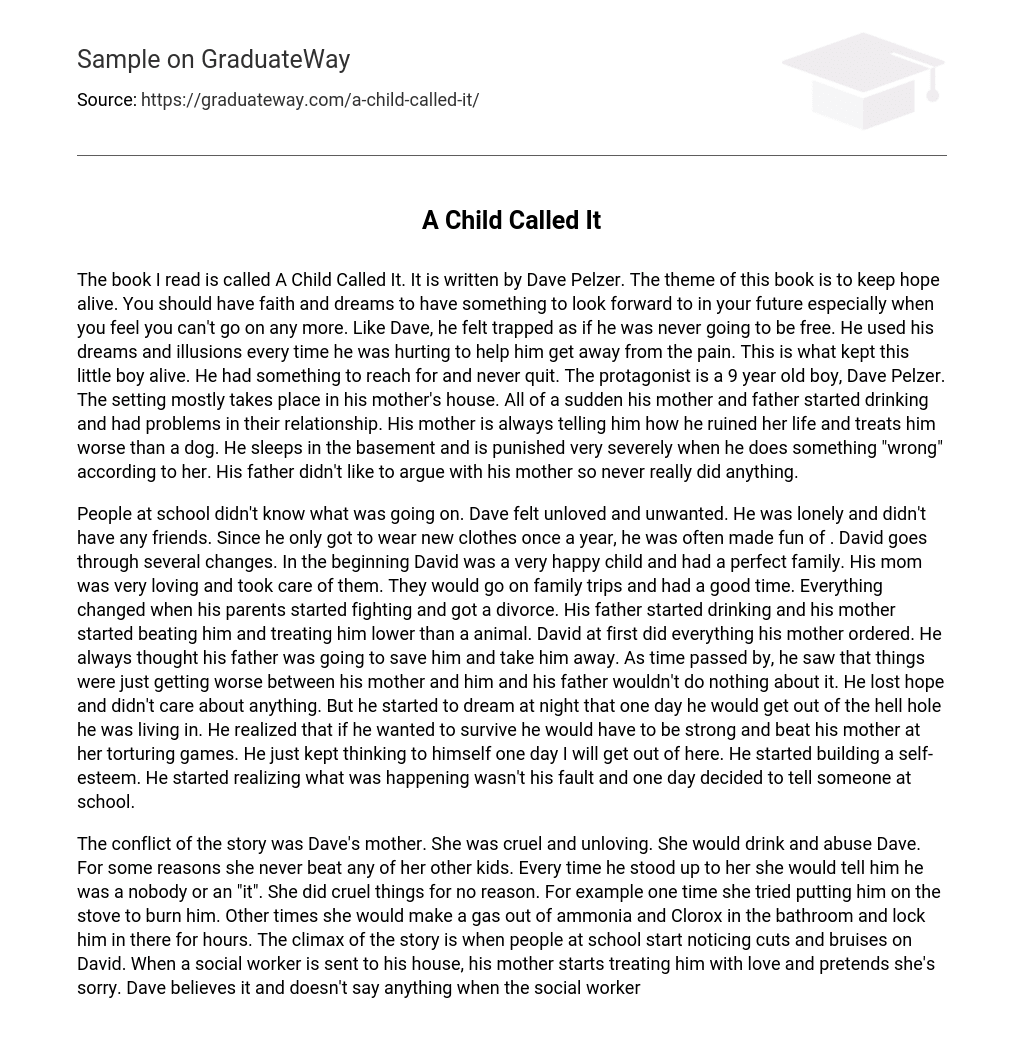The book A Child Called It, written by Dave Pelzer, explores the theme of preserving hope. It emphasizes the importance of having faith and dreams, especially during times of despair. Like Dave, who felt trapped and without freedom, he utilized his dreams and illusions as a means to escape pain. This determined boy refused to give up and continuously reached for something better in the future. The story revolves around 9-year-old protagonist, Dave Pelzer, predominantly set in his mother’s house. However, their peaceful domesticity abruptly changed when his parents began drinking and encountered relationship issues. His mother incessantly blames him for ruining her life and treats him with utmost cruelty, even worse than a dog. He is forced to sleep in the basement and suffers severe punishment defined by her subjective definition of “wrong.” Unfortunately, his father avoids confrontation and rarely intervenes.
Dave’s experience at school left him feeling unloved, unwanted, and lonely due to a lack of friends. He faced constant mockery for only wearing new clothes once a year. His once happy childhood with a perfect family took a drastic turn as his parents’ fighting led to their divorce. With his father turning to alcohol and his mother physically abusing him, David’s life became filled with turmoil. Initially, he obeyed his mother hoping that his father would intervene, but as time passed, he realized the situation was only getting worse and lost hope.
Despite this bleak reality, David found solace in dreams where he escaped from the nightmare he lived in. Determined to survive, he knew he had to become strong and resist the torment inflicted by his mother. Repeatedly reassuring himself that one day he would break free, David gradually built up self-esteem and understood that he was not responsible for what was happening to him.
Eventually, David made the brave decision to confide in someone at school.
In the narrative, the central conflict centers around Dave’s mother, who is portrayed as heartless and unaffectionate towards him. She frequently drinks and mistreats him, while strangely treating her other children differently. Whenever Dave tries to confront her, she belittles him by referring to him as a “nobody” or an “it.” With no apparent reason, she continues to subject him to more cruelty, such as trying to burn him on the stove or locking him in a gas-filled bathroom for extended periods of time. The story reaches its climax when his classmates notice the bruises and cuts on his body. As a result, a social worker is sent to investigate his home situation. At this point, his mother suddenly changes her behavior and acts kind and remorseful. Trusting this false facade, Dave doesn’t disclose any details of his abuse during the social worker’s visit. Naively believing that his dreams have finally come true, he becomes overwhelmed with joy. However, unbeknownst to him, this newfound happiness quickly vanishes once the social worker departs and the abuse restarts.
After reading this book, I have gained knowledge about the significance of hope in life. It grants resilience and empowers the mind to overcome challenges. Moreover, it has enlightened me that a child’s demeanor and actions may not always be their own doing; they might be going through similar circumstances as David. On a personal level, I wholeheartedly endorse this book because it captivated me and deeply moved me by exposing David’s experiences and the maltreatment endured by other children. It is inconceivable for me to fathom how someone like David’s mother could inflict such cruel acts upon an innocent young child.





